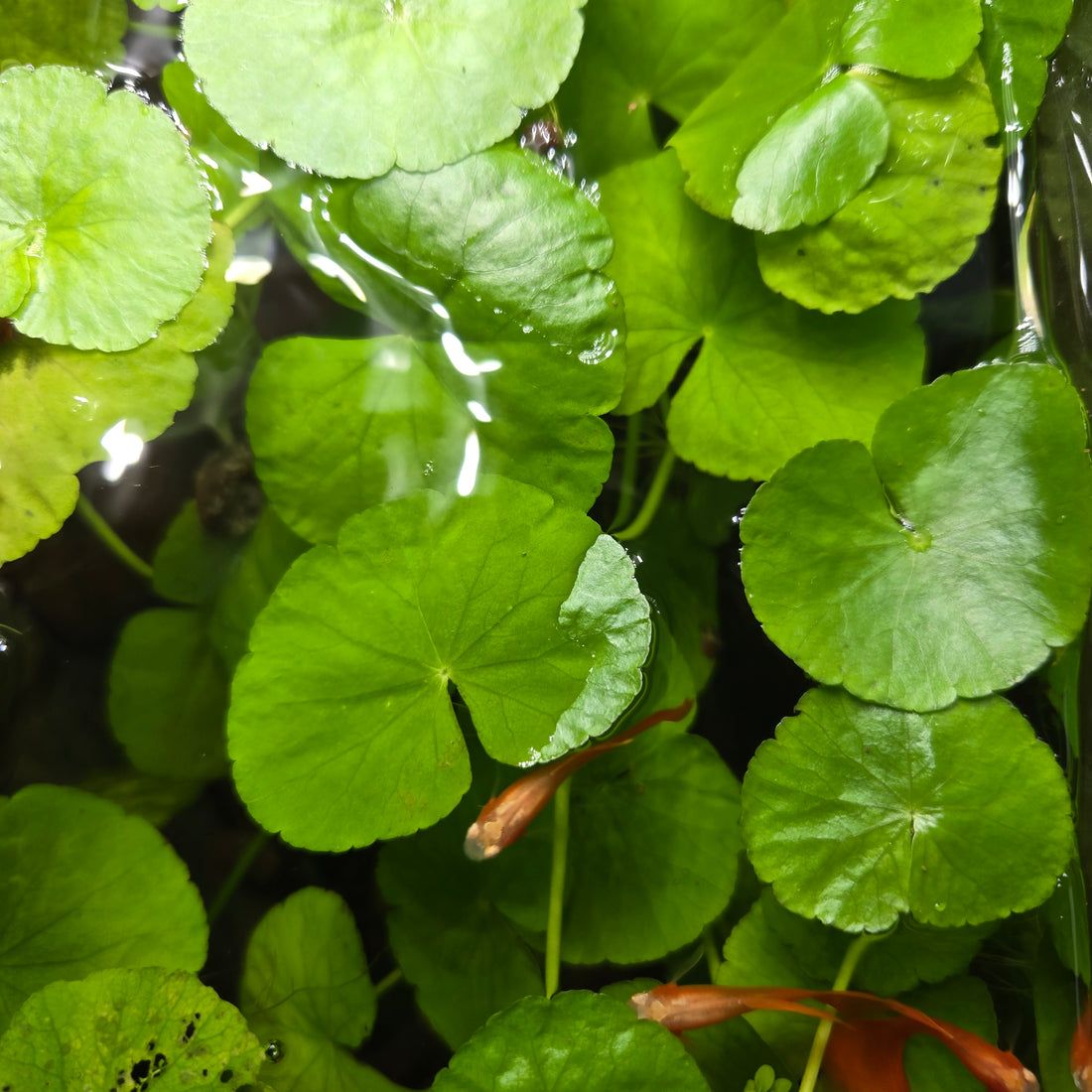
Why Brazilian Pennywort is the Best Plant for Your Aquarium
Share
When starting a new aquarium, choosing the right plants can make a huge difference in its success. Brazilian Pennywort, Hydrocotyle leucocephala, should be the first plant you include in your tank. This fast-growing, easy-to-care-for plant adapts well to various conditions, making it perfect for beginners. Not only does it quickly enhance the visual appeal of your aquarium, but it also contributes to a healthier environment for your fish. Japanese Pennywort, Hydrocotyle tripartita, is another excellent choice, offering unique aesthetic and functional benefits. In this post, we'll explore the history, care, and uses of both plants to help you create a thriving aquatic habitat.
History and Background
Brazilian Pennywort is a versatile and fast-growing plant native to Central and South America. It thrives in wetlands, marshes, and slow-moving rivers. Known for its lush green leaves, this plant can adapt to various tank conditions, making it an excellent choice for beginners.
Japanese Pennywort originates from Southeast Asia and is famous for its small, clover-like leaves and its ability to create dense carpets in aquariums. Its fast growth and easy maintenance make it popular among aquascapers.
Care Instructions
Lighting Requirements:
Brazilian Pennywort prefers medium to high light but can survive in lower light conditions, although it will grow more slowly. Japanese Pennywort, on the other hand, requires high lighting to thrive and maintain its compact growth form.
Temperature Range:
Both plants thrive in water temperatures between 68-82°F (20-28°C).
Water Parameters:
Brazilian Pennywort prefers a pH range of 6.0-7.8 and can adapt to both soft and hard water conditions. Japanese Pennywort thrives best in pH levels of 6.0-7.5 and can adapt to different water hardness levels.
Growth and Pruning:
Brazilian Pennywort can grow up to 24 inches tall and 6 inches wide. Regular pruning is necessary to control its rapid growth. Japanese Pennywort is ideal for creating a carpet or lush green cover with its small, clover-like leaves. Regular pruning is essential for both plants to prevent them from overrunning the tank.
Propagation:
Brazilian Pennywort can be propagated by cutting healthy stems and planting them in the substrate or letting them float. The cuttings root quickly and start growing. Similarly, Japanese Pennywort can be easily propagated through cuttings. Plant the cuttings in the substrate, and they will root and spread quickly.
Uses in Aquariums
Aquascaping:
Brazilian Pennywort is ideal as a background or floating plant. It provides shade and hiding spots for fish, enhancing the tank's depth and visual appeal. This plant also helps absorb excess nutrients, improving water quality and controlling algae by blocking light. Japanese Pennywort is perfect for the foreground or carpeting, adding texture and density to the aquarium. Its distinctive clover-like leaves complement other plants and decorations, adding visual interest and depth.
Benefits:
Both plants absorb excess nutrients, helping to reduce nitrate levels and improve water quality. Their rapid growth can help control algae by shading the tank, potentially resolving "green water" algae problems without using chemicals. Additionally, they provide hiding spots for small fish and fry, enhancing the overall ecosystem of the aquarium.
Common Problems
Despite being easy to care for, both Brazilian Pennywort and Japanese Pennywort can encounter issues. Melting occurs when plants transition from an emersed to a submersed state, leading to leaf loss. This is temporary, and new growth will appear as the plant adapts. Yellowing leaves are often a sign of iron deficiency, which can be remedied by supplementing with chelated iron. Sparse growth is usually due to low lighting or a lack of nutrients; increasing light intensity and using plant fertilizers like our Fancy Fert, can improve growth. Both plants grow rapidly and can overrun the tank, blocking light. Regular pruning is essential to keep growth in check and maintain a balanced environment.

Proper Disposal of Plant Trimmings
Proper disposal of plant trimmings is crucial to prevent the introduction of non-native species into local ecosystems. Gather all the trimmed plant material and allow the trimmings to dry out completely, either by placing them in a sunny spot or using a paper towel. Once dried, place the trimmings in a sealed plastic bag and dispose of the sealed bag in the trash. Do not compost the trimmings or dispose of them in local waterways, as they can potentially introduce invasive species.
Conclusion
Brazilian Pennywort and Japanese Pennywort are excellent choices for beginner fish keepers. They are easy to care for, fast-growing, and provide numerous benefits to your aquarium. Whether you use them for aquascaping or improving water quality, these plants will enhance the beauty and health of your fish tank.
Happy fish keeping!
